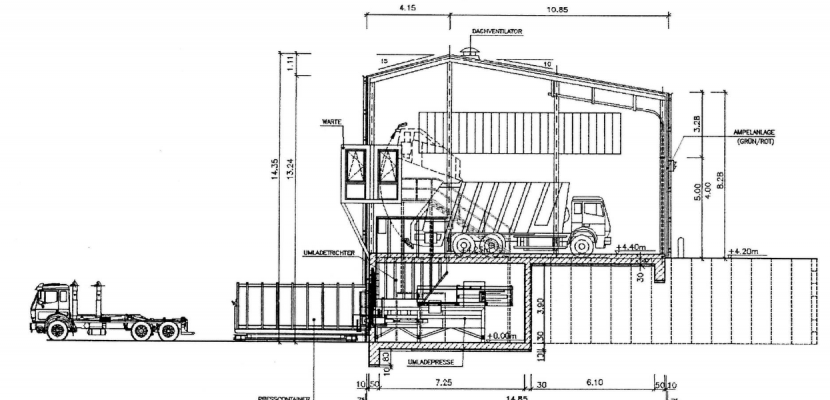Image

Using a landfill area after closure of a landfill for a Waste management facility: Luckenwalde
Published on 05 April 2019

Germany
Brandenburg
This is the good practice's implementation level. It can be national, regional or local.
About this good practice
The objective of the practice is to use existing infrastructure of the former landfill for further purpose, in this case for waste management.
The landfill in Luckenwalde for domestic waste was closed in 2005. While on the landfill a surface capping was installed, the infrastructure such as scale, social and administrative buildings, parking lots and others asphalted areas remained and were preserved.
In order to use the existing facilities as a waste management facility-reloading and compaction station, additionally a waste tipple and a waste press (350 kN) were constructed. The technical facility allowed containerizing the waste and thus decreasing the waste in volume. The capacity is 10,000 Mg/a or 40 Mg/d.
The domestic waste reloaded and compacted originates from the city of Luckenwalde and the surrounding rural area. The next incineration plant is at far distance; the reloading is part of transport logistics and optimizes the effectivity of the transport. All transports are conducted by trucks.
The public waste disposal authorities benefit from the practice as transport cost are reduced. Also the emission of greenhouse gas decrease.
The landfill in Luckenwalde for domestic waste was closed in 2005. While on the landfill a surface capping was installed, the infrastructure such as scale, social and administrative buildings, parking lots and others asphalted areas remained and were preserved.
In order to use the existing facilities as a waste management facility-reloading and compaction station, additionally a waste tipple and a waste press (350 kN) were constructed. The technical facility allowed containerizing the waste and thus decreasing the waste in volume. The capacity is 10,000 Mg/a or 40 Mg/d.
The domestic waste reloaded and compacted originates from the city of Luckenwalde and the surrounding rural area. The next incineration plant is at far distance; the reloading is part of transport logistics and optimizes the effectivity of the transport. All transports are conducted by trucks.
The public waste disposal authorities benefit from the practice as transport cost are reduced. Also the emission of greenhouse gas decrease.
Expert opinion
After the closure of a landfill, the existing infrastructure (buildings, roads, weight bridge...) can be used as a waste treatment facility or transfer station. In the present case, the technical infrastructure of the former landfill is used to compact the waste before transport. This practice is a good example for regions that have no business case for an own waste treatment plant and need to transport the waste to other facilities. They can thus lower the costs and the ecological footprint of transporting waste.
Works at
Interreg Europe Policy Learning Platform
Resources needed
The financial resources to build the facilities and the waste tipple and waste press were about 1 Mio Euro. Human resources are steadily needed during operation of the reloading and compaction station. In return for the investments, financial cost for transport of waste is reduced.
Evidence of success
The practice is considered as good because it shows the use of buildings and other infrastructure in the former entrance area after closure of the landfill. Further, landfills are commonly in remote areas, thus no conflicts arise with residents due to emissions (noise or smell). Resources can be conserved as remaining technical facilities are further used.
Potential for learning or transfer
The practice is considered as good as
- infrastructure related to landfill management activities are reused after closure of the landfill,
- financial resources needed for waste transport decrease and
- the ecological footprint of waste transport decreases.
The practice may be implemented in remote rural areas, where the construction of an incineration plant or MBT-plant is not financially reasonable.
It may be also reasonable in areas where waste is still deposited on landfills in order to transport the waste to the next incineration plant or waste treatment facility.
In case of connection to the railway system, the reloading and transport may even be more sustainable.
- infrastructure related to landfill management activities are reused after closure of the landfill,
- financial resources needed for waste transport decrease and
- the ecological footprint of waste transport decreases.
The practice may be implemented in remote rural areas, where the construction of an incineration plant or MBT-plant is not financially reasonable.
It may be also reasonable in areas where waste is still deposited on landfills in order to transport the waste to the next incineration plant or waste treatment facility.
In case of connection to the railway system, the reloading and transport may even be more sustainable.
Good practice owner
You can contact the good practice owner below for more detailed information.
Organisation
Landesamt für Umwelt Brandenburg

Germany
Brandenburg
